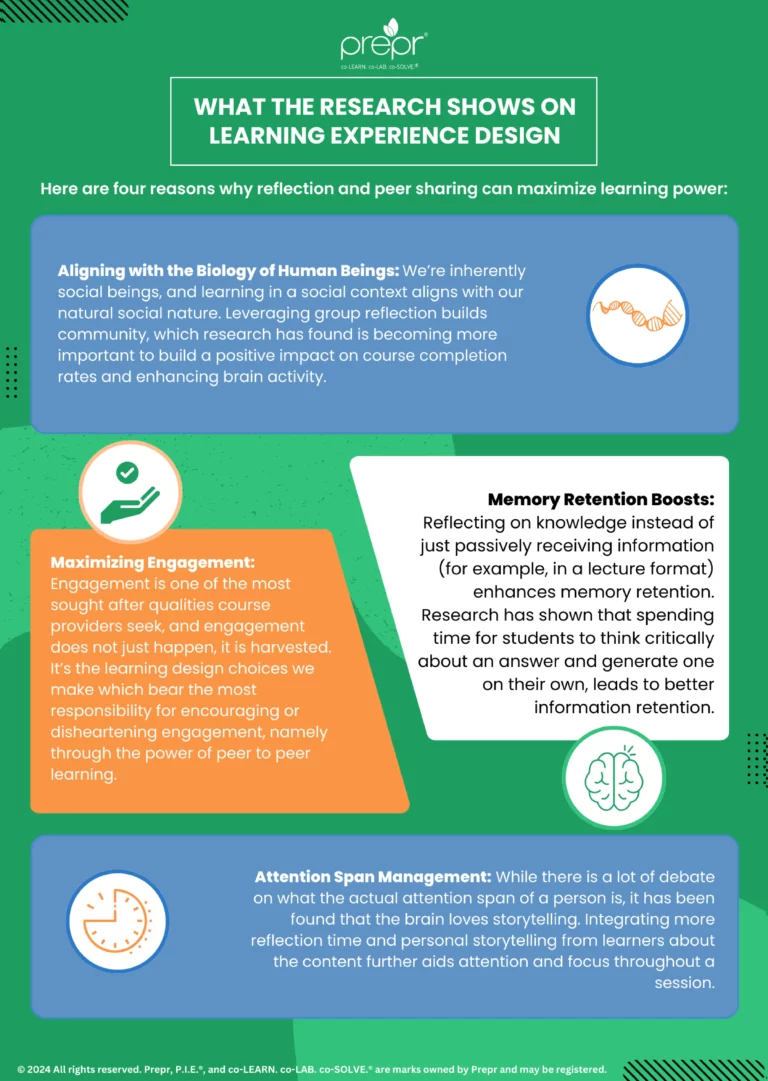The true beauty of learning is that we all can attend the same course, but have completely different takeaways based on our diverse perspectives and reflections.
John Dewey, the philosopher, psychologist, and foundational scholar of experiential learning stated, “’We do not learn from experience…we learn from reflecting on experience.”
Furthermore, Confucius was thought to have said, “Study without reflection is a waste of time. Reflection without study is dangerous.”
If you are a course designer, creating a learning experience that encourages reflection is essential to ensure collaborative and interactive learning, and yet it is too often missing from most courses and educational providers.
Here’s a question for you to reflect on: When organizing your learning event or course, do you mostly prepare to talk to your participants or listen to their perspectives? If you’re like most people, the emphasis is on the former and not the latter.
Unfortunately, when we ignore the valuable life experience and insights from each learner in the room, we end up reducing everyone’s potential for impactful learning.
Here are four reasons why reflection and peer sharing can maximize learning power:
Attention Span Management: While there is a lot of debate on what the actual attention span of a person is, it has been found that the brain loves storytelling. Integrating more reflection time and personal storytelling from learners about the content further aids attention and focus throughout a session.

Ultimately, in order for learners to retain the information and engage more in sessions, they need to be more involved in the content, generating and sharing their ideas with others. Here are 10 top techniques to integrate reflection practices in your next learning event:

At Prepr, we’ve embedded this research in our learn-by-doing approach to designing courses. Deliberate reflection prompts are integrated into our learning platform and live sessions to encourage meaningful engagement and a thorough understanding of content.
Last year, our programs taught critical workplace skills to 420+ youth entering the workforce and provided leadership training to 86 professionals. Read more about our impact here.


Discover pre-built labs and instructor-led programs through PreprLabs, our workforce development platform.
Prepr Foundation respectfully acknowledges that we live, work, and play on the Treaty Lands and Territory of the Mississaugas of the Credit First Nation Territory, The Haudenosaunee Confederacy, and The Huron-Wendat and Wyandot Nations. We express gratitude to all Indigenous communities for stewarding and sharing the land.
Sign up for our newsletter to stay up-to-date with our latest programs, insights, offers, and more.
We respect your privacy
© 2025 All rights reserved. Prepr, P.I.E.®, and co-LEARN. co-LAB. co-SOLVE.® are marks owned by Prepr and may be registered.
Just type a few words describing what you need in the box below.
Sign up for our newsletter to stay up-to-date with our latest programs, insights, offers, and more.